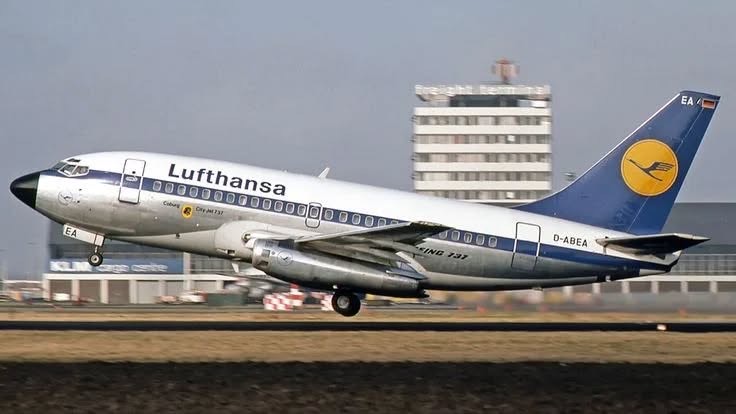The Boeing 737-100 is the first model of the Boeing 737 family, which can be called the starting point of the entire "Boeing 737" legend. Although its output is very small and all of it has been withdrawn from operation, it occupies an important position in the history of aviation.
The following is a detailed introduction about it:
Brief account
· Positioning: A short-range, narrow-body, twin-jet airliner, which aims to fill the gap in the short-range routes of Boeing's product line and competes with BAC 1-11, DC-9 and other models.
· First flight time: April 9, 1967.
· Put into operation time: On February 10, 1968, Lufthansa took the lead in putting it into commercial operation.
· Production quantity: Only 30 have been produced. Due to its short body, the market prefers the slightly longer derivative model 737-200.
---
Main features
1. "Short" and concise:
· The 737-100 is the shortest model in the 737 family, with a fuselage length of only 28.65 meters (94 feet). Compared with today's most common 737-800 (39.5 meters) and 737 MAX 8 (39.5 meters), it looks very petite.
· This short-body design made it very suitable for branch routes with low passenger flow at that time.
2. Low landing gear and "bend" design:
· In order to adapt to the simple ground security equipment of many airports at that time (no need for bridges and large refueling vehicles), the 737 adopted a unique low landing gear design to make the fuselage closer to the ground.
· The bottom of the engine compartment is flat. In order to provide sufficient ground clearance for the engine, the engine fairing of the 737-100 presents a unique "bend" or "seasaw" shape, which is one of its most prominent appearance features.
3. Power system:
· Equipped with two Universal JT8D-7 low-culvert ratio turbine fan engines, a single thrust is about 14,000 pounds (62.3 kN). This engine is famous for its reliability, but compared with modern engines, its noise and fuel consumption are higher.
4. Cockpit:
· The traditional "analog" cockpit is used, full of pointer instruments and mechanical switches, which is in stark contrast to the 737 NG or MAX series of today's glassed cockpit.
5. Passenger capacity:
· The typical two-level cabin layout can carry about 100 passengers (the number "100" also comes from here).
· The full economy class layout can accommodate up to 124 people.
---
Historical significance and anecdotes
· Launch customers and the only major customers: Although United Airlines initially expressed interest, in the end, only Lufthansa firmly placed the order and became its largest and most important user. It can be said that without the support of Lufthansa, the 737 project may not have gone so smoothly.
· Relationship with the 737-200: Shortly after the launch of the 737-100 project, Boeing launched the 737-200 with a fuselage length of 1.8 meters at the request of United Airlines. With greater passenger capacity and flexibility, the 737-200 quickly became the mainstream of the market, producing more than a thousand, far exceeding the -100. Therefore, the 737-100 is more like a prototype for "testing the water".
· Boeing's "Greyhound": Boeing once nicknamed the 737 project as "The Baby Boeing", which vividly illustrates its market positioning.
· All retired: The last commercial 737-100 was retired in 2005. The first prototype (registration number N73700) retained by Boeing itself was finally donated to the museum for preservation after a long time.
Brief table of technical data
Project Specification
Model name Boeing 737-100
First flight time April 9, 1967
The body length is 28.65 meters (94 feet)
Wingspan 28.35 meters (93 feet)
Height 11.23 meters (36 feet 10 inches)
Maximum take-off weight 49,190 kg (108,000 pounds)
Passenger capacity 100 - 124 people
The range is about 3,440 kilometers (1,860 nautical miles)
Engine Two Puhui JT8D-7 turbofan engines
Cruising speed Mach 0.74 (about 780 km/h)
Sum up
As the "eldest child of the most successful airliner series in the entire aviation history", the Boeing 737-100 has successfully verified the design concept and market positioning of the Boeing 737, although its own business achievements are limited. Its direct successor, the 737-200, has achieved great success and laid a solid foundation for the development of the subsequent classic model (-300/-400/-500), the new generation (NG, -600/-700/-800/-900) and the MAX series. Today, when we see the 737 with airports all over the world, we should not forget that it all started with the short and tough 737-100 in 1967.

